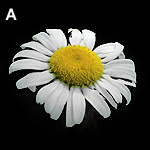 |
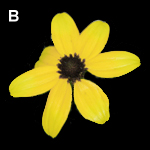 |
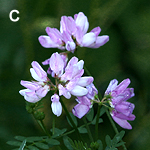 |
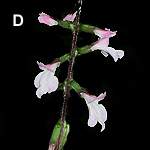 |
|
`. ** Plant
Finder ** |
||||
| .Home | Species Descriptions | Go Back | ||
|
How to select correct colors in the key. |
||||
|
. |
||
Basing a key on flower color isn't without complications. What if a flower has two or more colors? Which color should a user select? If one selects the color that is not coded into the key, they will not reach an identification. Consider the following examples. |
||
 |
 |
 |
 |
|
For
flower
(A)
shown
above,
should
one
choose
white
or
yellow?
For
flower
(B),
should
one
choose
yellow
of
dark
brown?
For
flower
(C)
pink,
violet
or
white?
For
flower
D,
white
or
pink?
It
may
be
best
in
cases
such
as
these
to
conclude
that
whichever
color
stands
out
as
the
most
salient
at
a
distance
of
ten
or
twenty
feet
is
the
one
we
will
code
into
the
key.
So,
for
flower
(A)
choose
white.
For
flower
(B)
choose
yellow.
For
flower
(C)
choose
pink.
For
flower
(D)
choose
white.
. |
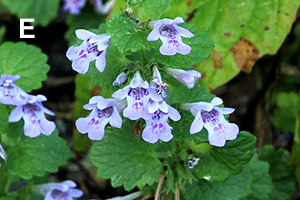 |
 |
|
.
Coding
is
based
primarily
on
petals,
and
sometimes
on
sepals
for
plants
that
don't
have
petals,
but
it
is
never
based
on
bracts
or
involucres,
which
are
usually
green
and
leaf-like. |
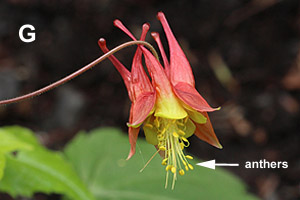 |
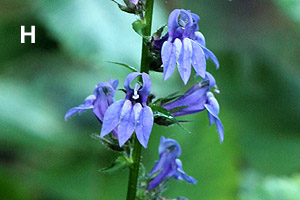 |
|
. |
 |
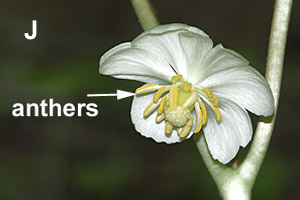 |
| . Anthers of many species are white or yellow, but they will not usually be the basis for coding. Round-lobed hepatica (Hepatica americana), (flower I, above ), will be placed in the group of violet-colored flowers. Mayapple (Podophyllum peltatum), (flower J, above) will be placed in the group of white flowers. . |
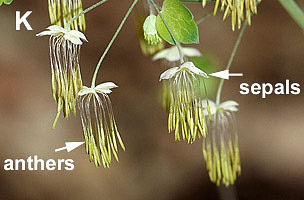 |
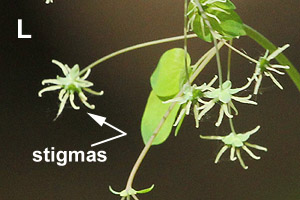 |
| .
Some species are dioecious, meaning that the male and female structures occur on different individuals. Early meadow rue (Thalictrum dioicum), is one such species. Flowers ( K ) have yellow anthers (male), while flowers ( L ) have whitish / greenish stigmas (female). These images are from the same species. In this case, we will place them in the "other" category. . |
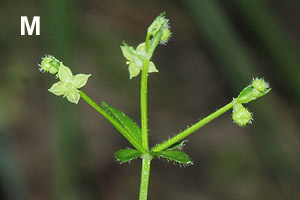 |
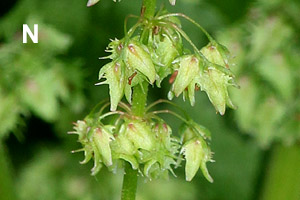 |
| .
Finally, there are species with greenish (including chartreuse) flowers. They may lack petals or sepals or both. Those that have distinguishable green petals or sepals (or both) will go into the "green" category. The image of flower (M), "wild licorice" (Galium circaezans), and flower (N), "broad-leaved dock", (Rumex obtusifolius), are shown above. Both of those will be placed in the green category. Other species have extremely small, indistinguishable flowers, often in dense clusters. We will place those in an "other" category. |
||
| If you don't find an identification using one color, try choosing another color, or the "other" category. | ||
|
To
continue
to
the
wildflower
key,
click
here. . |
|
Images and text copyright Arieh Tal, 2017-2022. All rights reserved. ( Terms of Use ) |